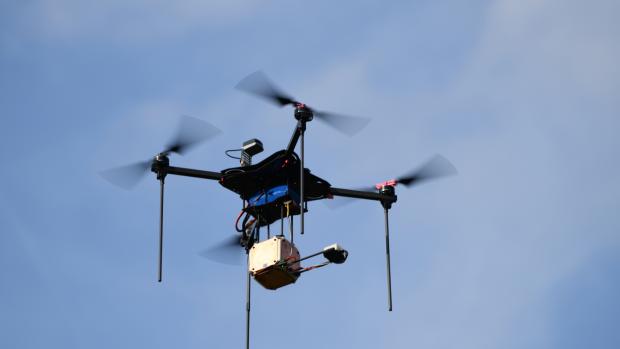Manifold Robotics expands autonomous data collection drones from sea to air
The Tandon-bred start-up is expanding its focus with the help of the U.S. Army Research Laboratory and the New York Power Authority

Back in 2013, local Brooklyn papers were excitedly reporting on a new initiative aimed at getting residents involved in cleaning up the highly polluted Gowanus Canal. Brooklyn Atlantis, as the project was known, was the brainchild of NYU Tandon Professor of Mechanical and Aerospace Engineering Maurizio Porfiri, who envisioned building and launching robotic boats to collect water-quality data and capture images of the infamous canal, which citizen scientists would then view and help classify. Those robotic boats ultimately led to the formation of the company Manifold Robotics, which aimed to further develop the unmanned surface vehicles (USVs) with sensor technology. (The fledgling company received support from PowerBridgeNY, a collaborative initiative to bring university research to market.) More recently, the startup has now branched out to develop a mobile data collection platform that allows unmanned aerial vehicles (UAVs) to operate safely in the sky near power lines.
Jeff Laut — Porfiri’s doctoral student back in Brooklyn Atlantis days and now CEO and chief engineer of Manifold Robotics — explains that power companies are starting to use UAVs to inspect their power lines instead of helicopters, which can be noisy, risky, and expensive. Despite their advantages, however, UAVs still pose some issues: the high electromagnetic fields that exist near power lines tend to destabilize conventional UAV navigation systems, and low visibility can greatly increase the chances that a UAV will collide with either a line or a transmission tower.
 Manifold’s system — which will be capable of operating beyond visual line of sight (BVLOS) — will enable UAVs to detect, avoid, and autonomously track along power lines: it uses U.S. Army Research Laboratory technology Laut originally explored during his postdoctoral studies in Porfiri’s lab, a project that was funded by the National Security Innovation Network (NSIN), a Department of Defense innovation program office whose aim is to facilitate the commercialization of defense technology having dual-use (military and civilian) applications.
Manifold’s system — which will be capable of operating beyond visual line of sight (BVLOS) — will enable UAVs to detect, avoid, and autonomously track along power lines: it uses U.S. Army Research Laboratory technology Laut originally explored during his postdoctoral studies in Porfiri’s lab, a project that was funded by the National Security Innovation Network (NSIN), a Department of Defense innovation program office whose aim is to facilitate the commercialization of defense technology having dual-use (military and civilian) applications.
While Laut is excited about the new mobile data collection platform — which is being supported in part by New York Power Authority (NYPA) and the New York State Energy Research and Development Authority (NYSERDA) — proliferating autonomous aquatic vehicle solutions continues to be a primary goal. “When we launched the company in 2017, we were intent on making a significant impact in the world of water-quality data collection, and I think we’ve done that,” he says. “We’re thrilled that we can help our clients meet their specific measurement needs and to ultimately contribute to the health of the planet, and that will not change as we develop additional technology solutions.”
Another constant: Laut’s pride in being an NYU Tandon alum and his gratitude for Porfiri’s guidance. “Although he doesn’t directly participate in our daily project hurdles at the company,” Laut says of his former Ph.D. advisor, “because of his insights and broad expertise, he continues to serve as valued technical advisor on all mobile sensor platform projects.”





